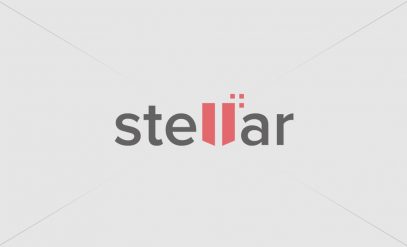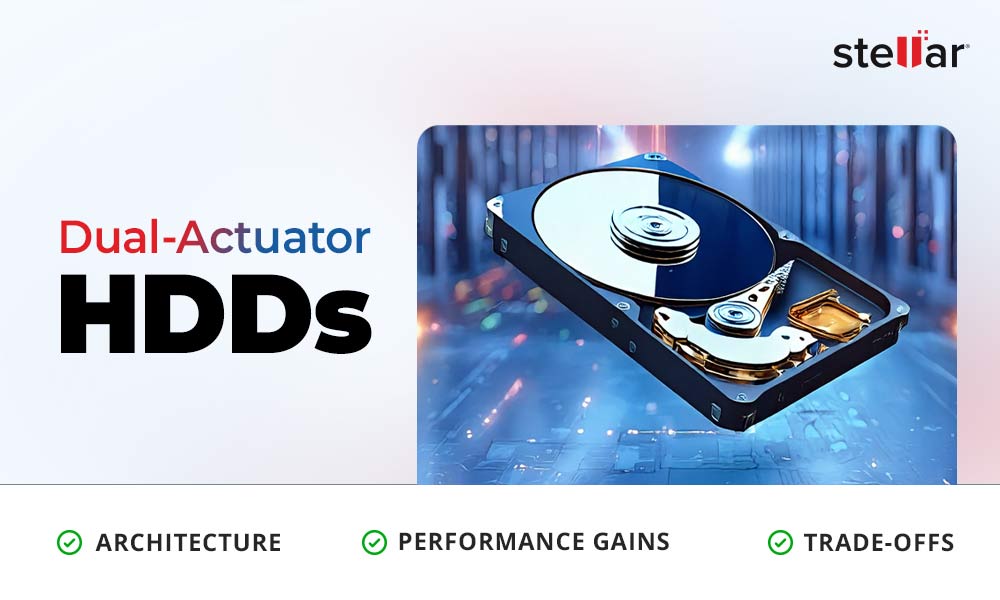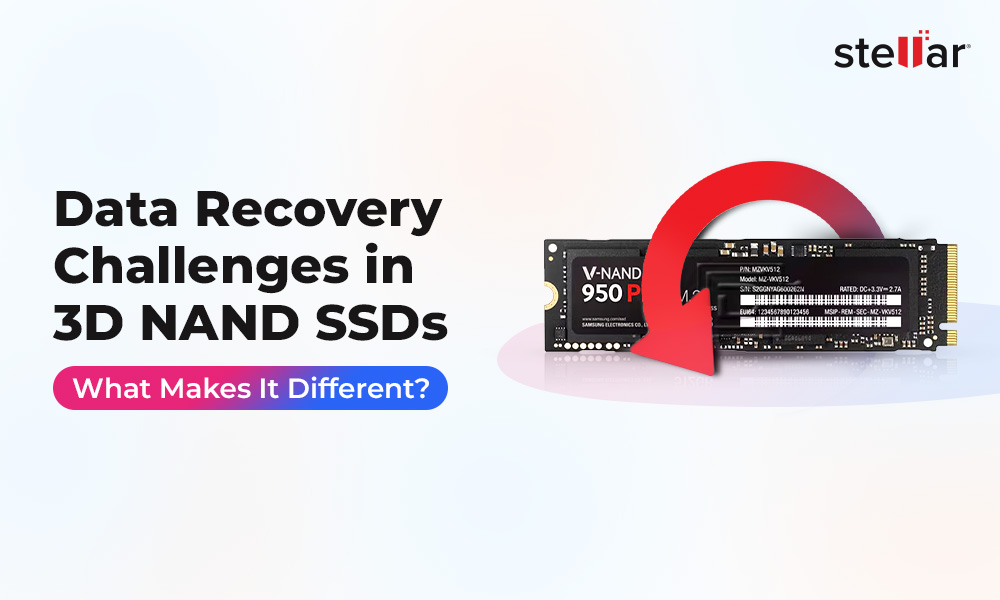Modern hard drives constantly push the limits of how many data bits can be squeezed onto a spinning platter. The magnetic recording “trilemma” says a medium needs to be easy to write to, stable for storage, and easy to read. This sets a tough ceiling on traditional perpendicular recording.
Three new tricks, HAMR, MAMR, and EAMR, break this barrier by temporarily adding energy (heat, microwaves, or current) during writes. In HAMR (Heat-Assisted Magnetic Recording), a tiny laser heats the bit location so the head can flip a very hard (high-coercivity) magnetic material. In MAMR (Microwave-Assisted MR), a spin-torque oscillator in the head bathes the area in a microwave field that also effectively lowers the write field needed.
EAMR (Energy-Assisted MR) is a broader term including methods like Western Digital’s ePMR, which injects an extra electrical current into the write head to stabilize writes. All three tricks let drives write much smaller bits (higher areal density) while keeping the drive form factor and interfaces the same.
HAMR (Heat-Assisted Magnetic Recording)
HAMR drives work like standard HDDs but with a built-in laser. Before each bit is written, the tiny laser spot-heats that platter region up to several hundred °C, briefly lowering its coercivity. The write head then flips the bit, and as the material quickly cools (in nanoseconds), the bit locks in place. This spot-heating lets HAMR drives use ultra-hard magnetic alloys often iron-platinum on a specialized glass substrate and write data in much smaller areas than previously possible.
In practice, HAMR platters are built from exotic “HAMR glass” with coatings to precisely control heat flow. The result is a dramatic jump in capacity: Seagate (a HAMR pioneer) has already produced 28 TB and 30 TB HAMR drives as of early 2024, and has demonstrated platters achieving 5 TB per platter, pointing toward 40 – 50 TB drives in the near future. HAMR is also attractive in that it can replace some traditional high-capacity drives. For example, a 20 TB PMR drive built with ten platters could be replaced by a 5-platter HAMR drive of similar capacity, slashing part count, power use, and cost.
Pros
- Delivers the highest projected areal density, enabling drives 40 TB+ and potentially far beyond.
- Uses a tiny heated spot to overcome magnetic limits, so very high bit density is achievable.
- Because the heating is extremely localized, overall power use can remain low (the laser only heats a tiny spot).
- Fits existing 3.5″ form factors and interfaces, no system redesign required.
- Higher per-platter density can mean fewer platters/heads for the same capacity, which may reduce mechanical complexity and cost-per-TB long term.
Cons
- Needs precision optical hardware (near-field laser on the head) and special plated glass media, increasing component complexity.
- Manufacturing and alignment are difficult, driving up production cost.
- Media and heads must tolerate repeated ~400 °C heat pulses without degrading, a demanding materials problem.
- Extra optics and thermal cycling introduce new potential failure modes, creating reliability concerns.
- Overall engineering and production costs are higher vs. incremental approaches.
MAMR (Microwave-Assisted Magnetic Recording)
MAMR takes a different tack: instead of heating, it uses microwaves to help write data. A small spin-torque oscillator (STO) built into the write head generates a high-frequency (tens of GHz) microwave field right at the recording gap. This microwave field momentarily wobbles or lowers the effective coercivity of the magnetic media, allowing the existing magnetic head’s write field to flip bits that would otherwise be too hard to write.
In practice, specialized MAMR heads have a “field generation layer” and a “spin injection layer” that oscillate during writes. The oscillating microwaves and magnetic fields combine so the head can write to much higher density. Because MAMR avoids heating, it doesn’t cook the platters or require exotic heat-tolerant media, which in theory reduces wear on the drive.
Pros
- Promises HAMR-like density without heat, avoiding high-temperature lasers.
- Uses less extra power, no high-temp laser means a smaller power hit.
- Early research/lab results show 2–4 Tb/in² today with potential to reach very large drive capacities in future.
- STO is integrated into the head, so the drive keeps the same 3.5″ form factor and a similar power envelope as conventional HDDs.
- May offer slightly better power efficiency than HAMR in some projections.
Cons
- Requires a new head design (spin-torque oscillator) which adds manufacturing complexity and cost.
- Fitting the STO and its power source into a 3.5″ head assembly is an engineering challenge.
- Still immature at scale, no high-volume MAMR drives widely available (as noted through 2025).
- Some vendors pivoted away from MAMR toward other approaches, raising doubt about broad adoption.
- Long-term upside vs. HAMR is uncertain; designing reliable STOs remains a technical hurdle.
EAMR (Energy-Assisted Magnetic Recording, ePMR)
“EAMR” is an umbrella term for any approach that adds energy to the write process, and a key example is Western Digital’s ePMR (energy-assisted Perpendicular MR) technology. Rather than lasers or microwaves, ePMR simply injects extra electrical energy into the write head itself. In practice, WD’s ePMR design runs a controlled electric current through a metal layer in the write head during each write. This generates an additional magnetic field at the write pole, which effectively sharpens the write pulse and reduces jitter (variability) in the magnetization transition. The result is a more precise write that can reliably write narrower tracks on a conventional perpendicular medium.
Pros
- Simple and reliable: Builds on familiar PMR tech so manufacturers don’t need exotic materials.
- Low technical risk: Faster time-to-market because it uses field-proven substrates and media.
- Already delivers real capacity gains today (16–20+ TB on client drives; 26–32 TB on some data-center offerings).
- No lasers or microwaves: Power and thermal behavior stay close to existing drives.
- Incremental upgrade: squeezes extra density out of today’s designs with minimal system changes.
Cons
- Not a game-changer: Won’t reach the extreme densities HAMR/MAMR target.
- Likely hits an aerial-density ceiling sooner; there’s only so much extra magnetic field you can get from the head.
- Requires precise current control in a tiny head gap, which creates reliability/thermal limits at high currents.
- Currently vendor-specific: Adoption is limited to drives from vendors that implement it.
- Trades radical long-term potential for lower near-term risk and easier integration.
Comparing HAMR vs. MAMR vs. EAMR
| Technology | Method | Complexity | Current Capacity |
|---|---|---|---|
| HAMR(Heat-Assisted MR) | Tiny laser spot-heats the disk to lower coercivity, then conventional head writes the bit. | High: Requires new head with laser, exotic glass platters with heat-controlling coatings, nano-optics, etc. | ~28–30 TB drives shipping (launched Jan 2024) roadmap to 40–50 TB. |
| MAMR(Microwave-Assisted MR) | Spin-torque oscillator in head emits microwaves (GHz) that assist writing (lower coercivity) | Medium–High: Requires new heads with STOs and specialized multi-layer media; fewer exotic materials than HAMR but still complex. |
Not yet shipping (R&D stage): Theoretical capacity up to ~80 TB (future). |
| EAMR (ePMR) | Extra energy to the PMR head creates a brief magnetic field boost to reduce write jitter. | Medium: Minor change to existing head design (e.g. metal layer for current) and firmware; uses standard platters. No lasers or STO. | Up to 26 TB CMR / 32 TB SMR (Western Digital’s latest); drives like Ultrastar HC690 and HC580 reach these with ePMR. |
(Tb/in² = terabits per square inch, PB = petabytes)
The table highlights that all three methods aim for the same goal, squeezing more bits per track but with different trade-offs. HAMR packs the most punch in theory but has the steepest engineering curve. MAMR avoids heat but needs a complicated new head and is still in limited release. EAMR (ePMR) is the easiest upgrade path, giving a nice bump in capacity with relatively little upheaval (as seen in current 26–32 TB drives).
Data-recovery implications of HAMR / MAMR / ePMR
Higher platter density raises the stakes: physical damage (scratches, head crashes) can destroy far more bits at once, while logical recoveries largely stay the same, recovery tools still see the drive as a big HDD. Physical fixes grow tougher because heads and media are technology-specific (lasers, STOs, or energy-assisted write heads) and donor parts are scarce in early generations.
- Damage scope: Denser bits and exotic platters mean a single scratch or contamination can be far more catastrophic than on older drives.
- Logical vs. physical: Deleted/format recovery uses the same software but takes longer; hardware failures often require matching donor head assemblies and clean-room swaps.
- Practical reality: ECC and low-level cloning help if platters spin and electronics work, but physical recoveries become costlier and slower for new tech.
For general users and IT professionals alike, it’s important to remember that good backup habits are more crucial than ever. But when disaster strikes and a drive won’t boot or you’ve accidentally deleted that critical project, there are still options. In many cases, software alone can recover files from logical failures on any HDD. For example, a trusted Professional Data Recovery Software to Restore your Files can make the process easy.
This trial-based, user-friendly tool lets you scan your drive and preview what files are recoverable before you ever pay. It handles deleted files, formatted partitions, even drives that Windows calls “inaccessible,” giving you a chance to retrieve photos, documents, or videos with a few clicks. By showing you exactly which files can be restored, such software takes the guesswork out of data recovery… you only buy the full version when you’re sure your data is safe.
Conclusion
The future of HDDs is evolving beyond mere platter count: HAMR, MAMR, and EAMR represent the cutting edge of wringing more bits out of each square inch of magnetic media. HAMR leads in sheer capacity potential (hitting 30+ TB in 2024 and scaling to 40–50 TB soon), while MAMR promises similar gains without frying the disk (though it has lagged in shipping). EAMR/ePMR offers a more conservative path, modest bumps in density with proven tech, and already underpins the largest HDDs on the market today. Each approach has trade-offs: HAMR’s laser-based strategy is complex but powerful; MAMR’s microwaves are elegant but unproven; ePMR’s energy boost is simple but incremental.
In friendly terms: don’t panic if your shiny new 24 TB HDD stops behaving. The same principles of recovery apply and there are tools and experts ready to help. Technologies like HAMR, MAMR, and EAMR are pushing capacities skyward, but they don’t leave your lost photos or documents irretrievable. With careful backup and the right recovery approach, even the latest high-capacity drives can be tamed when data loss happens.













 8 min read
8 min read





